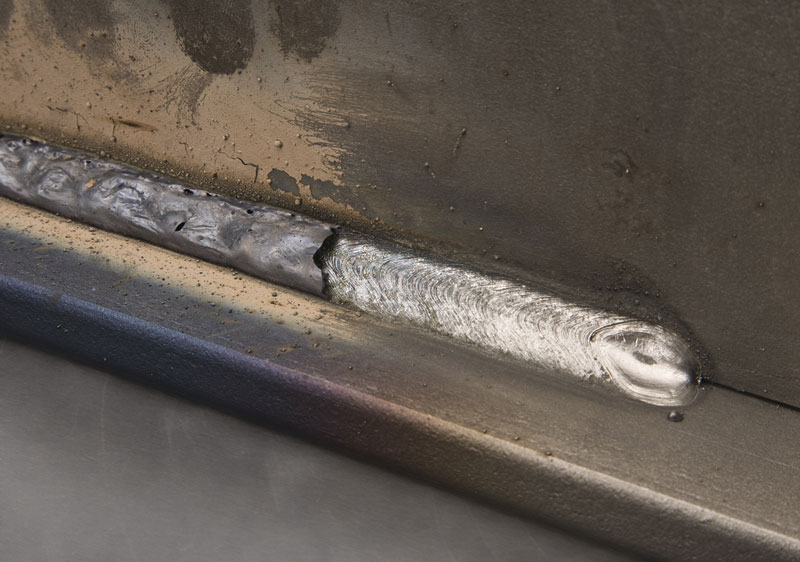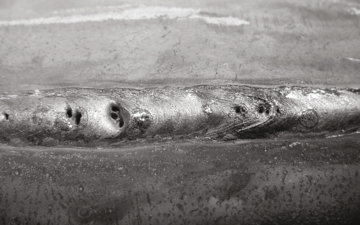What is Porosity in Welding: Best Practices for Staying Clear Of Porous Welds
Comprehending Porosity in Welding: Discovering Reasons, Impacts, and Prevention Strategies
Porosity in welding is a consistent challenge that can significantly impact the quality and honesty of welds. As professionals in the welding sector are cognizant, comprehending the reasons, effects, and prevention strategies connected to porosity is vital for achieving robust and trusted welds. By diving into the origin causes of porosity, analyzing its detrimental impacts on weld quality, and discovering effective prevention approaches, welders can enhance their knowledge and skills to produce top notch welds regularly. The elaborate interplay of variables contributing to porosity needs a thorough understanding and a proactive method to ensure effective welding results.
Typical Sources Of Porosity
Porosity in welding is mainly triggered by a combination of factors such as contamination, inappropriate protecting, and poor gas insurance coverage throughout the welding process. Contamination, in the form of dust, grease, or rust on the welding surface, develops gas pockets when heated up, resulting in porosity in the weld. Improper securing occurs when the shielding gas, frequently utilized in processes like MIG and TIG welding, is incapable to totally safeguard the liquified weld pool from reacting with the surrounding air, resulting in gas entrapment and succeeding porosity. Additionally, poor gas protection, typically due to wrong flow prices or nozzle positioning, can leave parts of the weld unsafe, enabling porosity to form. These aspects collectively add to the formation of gaps within the weld, deteriorating its integrity and possibly creating structural concerns. Understanding and resolving these typical causes are critical action in preventing porosity and ensuring the quality and toughness of bonded joints.
Impacts on Weld High Quality
The visibility of porosity in a weld can significantly compromise the general high quality and honesty of the welded joint. Porosity within a weld produces gaps or tooth cavities that compromise the framework, making it a lot more susceptible to breaking, rust, and mechanical failure. These spaces function as anxiety concentrators, reducing the load-bearing capacity of the weld and enhancing the possibility of premature failure under applied tension. On top of that, porosity can likewise work as prospective websites for hydrogen entrapment, additional exacerbating the destruction of the weld's mechanical residential or commercial properties.
Moreover, porosity can prevent the effectiveness of non-destructive testing (NDT) strategies, making it challenging to spot read here other issues or gaps within the weld. This can bring about significant safety and security worries, particularly in essential linked here applications where the structural stability of the welded parts is vital.

Prevention Techniques Overview
Given the destructive effect of porosity on weld quality, reliable prevention strategies are vital to maintaining the architectural stability of bonded joints. In addition, picking the ideal welding criteria, such as voltage, existing, and take a trip speed, can aid reduce the threat of porosity formation. By including these prevention strategies right into welding methods, the occurrence of porosity can be considerably reduced, leading to more powerful and extra trusted bonded joints.
Value of Appropriate Shielding
Proper securing in welding plays a vital duty in avoiding climatic contamination and guaranteeing the integrity of bonded joints. Protecting gases, such as argon, helium, or a mix of both, are commonly used to shield the weld swimming pool from responding with components airborne like oxygen and nitrogen. When these reactive components come into contact with the warm weld swimming pool, they can cause porosity, leading to weak welds with lowered mechanical residential or commercial properties.

Insufficient protecting can lead to numerous issues like porosity, spatter, and oxidation, compromising the structural honesty of the bonded joint. Consequently, sticking to correct securing methods is crucial to create high-quality welds with minimal defects and ensure the long life and integrity of the bonded components (What is Porosity).
Tracking and Control Approaches
Just how can welders effectively keep track of and manage the welding process to make sure optimum outcomes and protect against defects like porosity? One key technique is through using advanced surveillance modern technologies. These can include real-time monitoring systems that supply comments on specifications such as voltage, present, take a trip speed, and gas circulation rates. By continuously checking these variables, welders can recognize discrepancies from the ideal problems and make immediate adjustments to stop porosity formation.

In addition, carrying out correct training programs for welders is important for checking and controlling the welding process efficiently. What is Porosity. Educating welders on the value of preserving constant specifications, such as proper gas shielding and take a trip rate, can assist protect against porosity concerns. Normal evaluations and certifications can additionally make sure that welders excel in monitoring and regulating welding procedures
Additionally, the usage of automated welding systems can improve monitoring and control abilities. These systems can precisely control welding parameters, reducing the possibility of human error and making sure regular weld high quality. By incorporating sophisticated surveillance technologies, training programs, and automated systems, welders can properly monitor and manage the welding procedure to reduce porosity issues and achieve premium welds.
Final Thought
